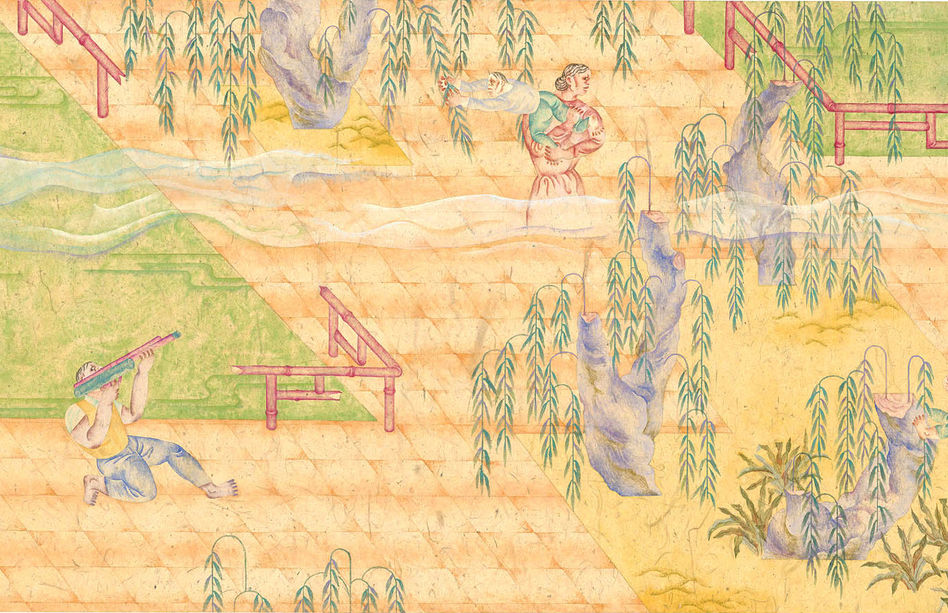YEN YU TING
顏 妤 庭
Subzoology: 2020 Taiwan Biennial 禽獸不如

在後疫情時代,本屆台雙展以「禽獸不如」(Subzoology)這個看似挑釁性的命題,去關注與回應科學、藝術與哲學界對於人與動物之間關係的國際性議題。策展人藉由佛學「六道輪迴」之「畜生道」為切入點,反思人作為一種動物其身上的動物性,並藉以探究「人類動物」與「非人類動物」的差異,以回應長期以來有關人與動物之間二分與相似關係的議題討論;同時,面對當今動物與人之間病毒的傳播與變異已溢出原先物種的樣態,甚至達到人畜共生或人獸同源的現實情境,人類再度深刻體認到自身作為地球上的一個物種,如何與其他物種共存的危機與可能性。當觀眾遊走在猶如動物園的展覽空間時,當可藉由藝術家所構築各式各樣的物種生態,反思人類對自然生物的長期宰制,以不同角度呼應並延展近年來全球雙年展聚焦於「人類世」的生態環境議題。
本次台雙展共邀請49位(組)具臺灣經驗的藝術家參與展出,規模擴大突破以往,以視覺藝術、聲音藝術、現場行為等多樣化的展演形式,以及新世代藝術家的創作主題,開啟觀眾對當代藝術與社會議題的多重想像與討論。此外,展演場域亦由本館延伸至臺中近郊—臺中市海洋生態館、大安媽祖文化園區,更首度在台雙展中與中部地區之外空間合作推出「衛星展」(臺北非常廟藝文空間)、「平行展」(臺北水谷藝術、新北酸屋、臺南節點藝術空間、高雄河南8號),以國美館為核心,串連全臺各地藝術行動與實踐,試圖以新的策展型態,讓藝術走出美術館,大幅延展台雙展的跨域視角,以落實臺灣在地藝術的發展。
Launched in 2008 by the National Taiwan Museum of Fine Arts, the Taiwan Biennial will convene for the seventh time this year. In contrast to the international edict of the Taipei Biennial, the Taiwan Biennial focuses on investigating contemporary art in Taiwan in reflection and response to the global contemporary art context through local and indigenous perspectives. The curatorial mechanism has developed from the inaugural thematic exhibition to an exhibition format which surveyed the ecology and diversity of Taiwan's contemporary art. The Biennial revisited establishing a curatorial theme in 2016, where a collaboration between in-house and guest curators broke through existing frameworks of the national exhibition to develop more exuberant, liberating, and agile exhibition formats and narrative vistas. This year, the Taiwan Biennial has made a further stride to experiment with a different artistic experience and exhibition method by inviting guest curator, artist YAO Jui-Chung. We anticipate that he will engage in a more intimate dialogue with participating artists through his curatorial practice that is both a creative endeavor as well as methodology, which is informed by his abundant and multifaceted artistic dynamism: in the areas of creativity, curatorship, critique, and authorship; by his commitment to advancing the development of contemporary art in Taiwan; and through his artistic practices that combine contemplations of location and history.
In the post-pandemic era, the ostensibly provocative theme of “SubZoology” for the 2020 Taiwan Biennial is a concerned response to international issues that explore the relationship between humans and animals through science, art, and philosophy. The curator uses the Buddhist theological concepts of the Animal Realm from the Six Realms of Existence, as a point of entry to reflect on the bestial qualities of humans as a subcategory of the animal kingdom. Differences between “human animals” and “non-human animals” are explored as a response to discussions on long-established dichotomies and commonalities that exist between humans and beasts. At the same time, in light of this post-pandemic era when symbiosis and homology between humans and animals are a reality, and when viruses spill over their original host organisms for mutual transmission between humans and beasts -- as one of the Earth's species, human beings have become profoundly aware of the crises and possibilities for coexistence with other organisms. As the audience moves through the zoo-like exhibition space, they have the opportunity to reflect on human dominion over other lifeforms through the variety of organisms and ecologies constructed by artists as a response to and as an extension of ecological and environmental issues of the Anthropocene – a topic of focus in recent biennial exhibitions around the world.
Some 49 artists and collectives with Taiwan experience have been invited to participate and exhibit at the 7th Taiwan Biennial. Through their creative themes, these emerging new-generation artists invite the audience to further imagine and discuss contemporary art and social issues through diverse exhibition formats including visual art, sound art, and live performance, on a scale that far exceeds past biennials. In addition, the exhibition arena will extend from the Museum itself to the Taichung Museum of Marine Ecology and the Daan Matsu Cultural Park on the outskirts of Taichung. And, for the first time, the biennial will collaborate with external spaces beyond the central Taiwan area in “satellite events” (VT Artsalon in Taipei) as well as “collateral events” (Waley Art in Taipei, Acid House in New Taipei City, Zit-Dim Art Space in Tainan, and Henan 8 in Kaohsiung). With the NTMOFA as a core, this new curatorial format seeks to link local artistic actions and practices from across Taiwan. Artistic creativity is taken out of the museum context to broaden the interdisciplinary domain and perspectives of the Taiwan Biennial to proactively dev





